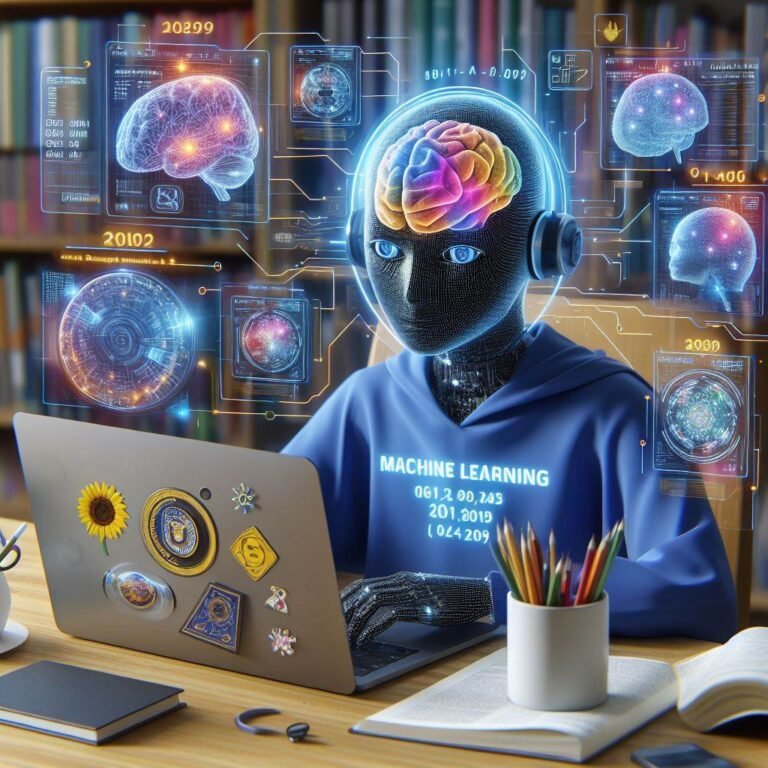Generative AI
Table of Contents
ToggleGenerative AI: Revolutionizing Digital Creativity
Introduction to Generative AI
Generative AI stands as a transformative frontier in the realm of artificial intelligence, offering a glimpse into a future where machines can create, imagine, and innovate alongside humans. This technology enables the generation of new content, from text and images to music and beyond, by learning from vast datasets. It’s not just about mimicking existing patterns; it’s about producing entirely new creations that were previously thought to be the sole domain of human creativity.
Understanding How Generative AI Works
The Foundation: Machine Learning Models
At the heart of generative AI are machine learning models, specifically designed to understand and replicate patterns within data. These models go through a training phase where they ingest large amounts of information and learn to recognize intricate patterns and relationships within that data.
Key Techniques in Generative AI
- Generative Adversarial Networks (GANs): GANs involve two models, a generator and a discriminator, which work against each other to produce highly realistic outputs.
- Variational Autoencoders (VAEs): VAEs are designed to compress data into a smaller form and then reconstruct it, often used for generating new data points that resemble the original dataset.
Applications of Generative AI
Generative AI has found applications in various fields, demonstrating its versatility and potential to revolutionize industries:
- Art and Design: From creating new artworks to designing fashion pieces, generative AI is pushing the boundaries of creativity.
- Content Creation: It’s being used to write articles, compose music, and even generate realistic video game environments.
- Medical Research: In drug discovery, generative AI models can predict molecular structures that could lead to new medicines.
Steps to Implement Generative AI
Implementing generative AI involves several key steps, each crucial for harnessing its full potential:
- Data Collection: Gather a comprehensive dataset relevant to the desired output.
- Model Selection: Choose the appropriate generative model based on the project’s needs.
- Training the Model: Feed the data into the model, allowing it to learn and adapt over time.
- Evaluation and Refinement: Continuously assess the model’s output and refine its parameters for better results.
To add another generative AI technique to the comparison, let’s consider Transformers:
| Technique | Use Case | Pros | Cons |
|---|---|---|---|
| GANs | High-quality image creation | Produces realistic images | Training can be challenging |
| VAEs | Data compression and generation | Efficient data handling | May produce less accurate outputs |
| Transformers | Language generation, translation, and more | Highly flexible and capable of understanding context | Requires substantial computational resources and data for training |
While the core of this article has laid out the foundational elements of generative AI, including its workings, applications, and ethical considerations, there’s a broader context to consider as we look forward to the future of this technology.
The Future of Generative AI
The trajectory of generative AI suggests a future where its integration into daily life and industries becomes seamless and profoundly impactful. Here’s what to expect:
- Enhanced Creativity and Efficiency: Generative AI will become a vital tool for creative professionals, enabling them to produce work more efficiently and explore new realms of creativity.
- Personalization at Scale: From personalized marketing campaigns to tailored educational content, generative AI will allow for customization at a level previously unimaginable.
- Innovative Solutions to Complex Problems: Its ability to process and generate new data rapidly makes it a powerful tool for solving complex problems in areas like climate change, healthcare, and logistics.
Navigating Challenges and Ethical Considerations
As we embrace the potential of generative AI, it’s also essential to address the challenges and ethical considerations it brings:
- Data Privacy and Security: Ensuring the data used by generative AI models is sourced ethically and managed securely to protect individual privacy.
- Bias and Fairness: Addressing inherent biases in the data and striving for fairness in the AI-generated content.
- Intellectual Property: Developing legal frameworks to manage the intellectual property issues related to AI-generated content.
Engaging with Generative AI
For those interested in exploring or implementing generative AI, here are practical steps to get started:
- Educational Resources: Invest time in learning about AI through online courses, workshops, and reading materials.
- Community Engagement: Join AI communities and forums to exchange ideas, find collaborations, and stay updated on the latest developments.
- Experimentation: Start with small projects to gain hands-on experience with generative AI models and tools.
Conclusion: A Collaborative Future
Generative AI represents a significant leap forward in our ability to harness technology for creative and analytical tasks. Its future is not just in the hands of developers and researchers but also in how society chooses to adopt, regulate, and integrate it into various domains. By fostering a collaborative approach that includes artists, designers, ethicists, and policymakers, we can ensure that generative AI benefits humanity as a whole, unlocking new potentials while navigating its challenges with wisdom and foresight.








